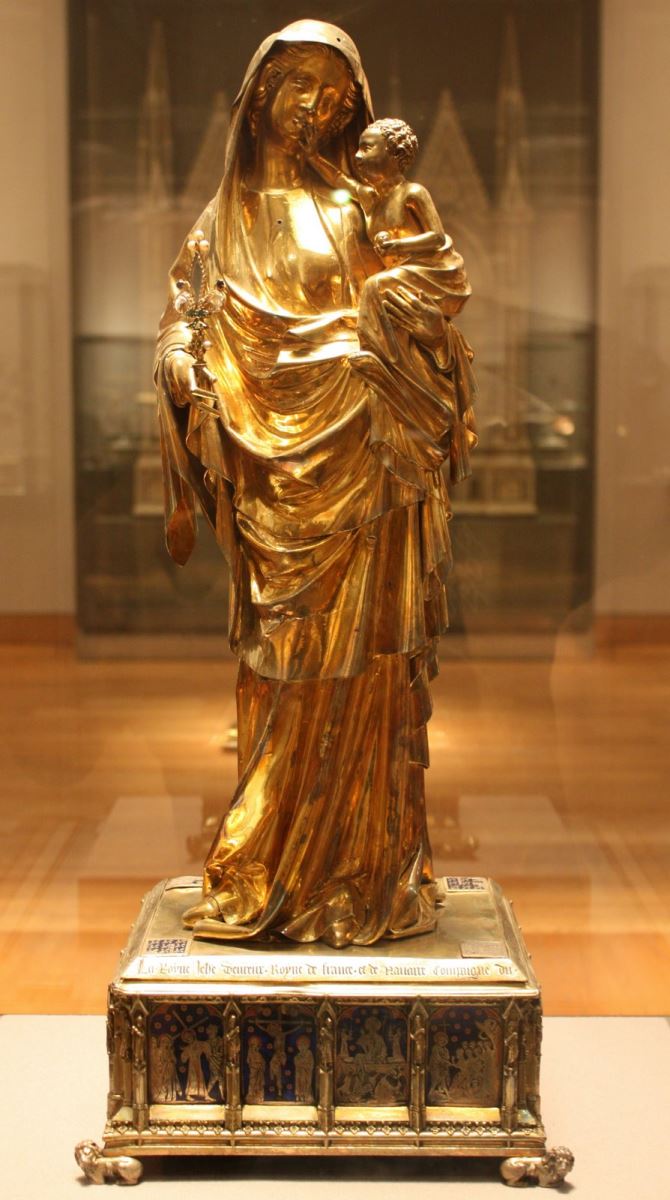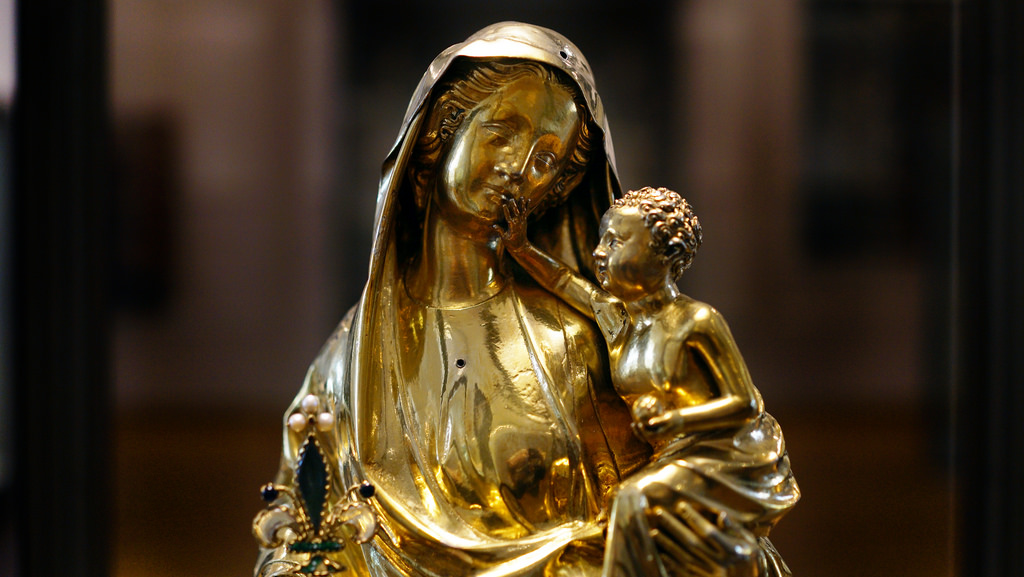
Jeanne d'Évreux was born in 1310 in the town of Évreux, France. Her parents were Count Louis of Évreux and Marquerite d'Artois and also was the great-granddaughter of King Louis the IX who ruled in France in 1226 until his death. She married to Charles IV on July 5, 1324 who was the son of Philip IV and Queen Jeanne de Navarre. The time she spent with her husband was relatively short and became widowed only after four years of marriage. However, during this time, King Charles commissioned the manuscript known as The Book of Hours of Jeanne d'Évreux as a gift to his wife. During the time of their marriage, Jeanne never bore any male heir.

The sculpture depicts the Virgin Mary holding Christ as a baby in her arms. The pose fashioned here uses the Byzantine "virgin of tenderness" iconography which is the Mary holding Jesus as a baby in her arms. The Virgin and the Child of Jeanne d'Évreux was created in within the Gothic time period in Europe, where images of the Virgin Mary began to display how she is the affectionate and loving mother of Christ. Instead of being the throne of Christ, she instead is now seen playing with or holding her son. Art pieces during this time were more human-like which brought back the classical style of Christian art in a lot of these works. Mary's facial expressions are very compassionate and loving with Christ gently touching his mother's face. It is apparent that the gestures of Christ and Mary as well as the robes she is wearing are human and naturalistic which are typical characteristics of art in these times.

The base of the sculpture has three separate buttresses separating different scenes of Christ as a teacher and the Passion of Christ with his crucifixion. These scenes are drawn on a dark blue background with colours of emerald green, yellow and red on gilded silver with the figures painted in a golden colour. The base is supported at the bottom by four miniature lions bearing the weight of the sculpture. In the right hand of the Virgin Mary, she is holding a sceptre with the fleur-de-lis with precious stones decorating it. The symbol of the fleur-de-lis is often used to represent the French monarchy. In a more religious context, the fleur-de-lis is often associated with the Holy Trinity (the Father, the Son, and the Holy Spirit) or the Virgin Mary because it can also represent pureness and chastity. The use of the symbol on sceptres establishes that the figure is Saint-like or holy.

Similar works of art would include pieces such as The Virgin of Paris — a late Gothic sculpture that dates in the early 14th century. This statue is found in a similar posture as The Virgin and Child but the clothing is somewhat different. Mary is dressed in a gown, holding a sceptre in the right hand and is also wearing a crown which represents her as the queen of Heaven. Christ is no longer touching the face of his mother but is holding onto a piece of her clothing as well as a round ball. This sphere represents the Earth and how Christ is its ruler. This piece was commissioned for the Cathedral of Notre Dame in Paris.
Other similar pieces include the Byzantine styled icon known as the Mother of God of Tenderness (Virgin of Tenderness), and the Mother of God of Vladimir. Both of these pieces are icons of the Virgin Mary holding Christ as a child with their cheeks touching as they embrace.













